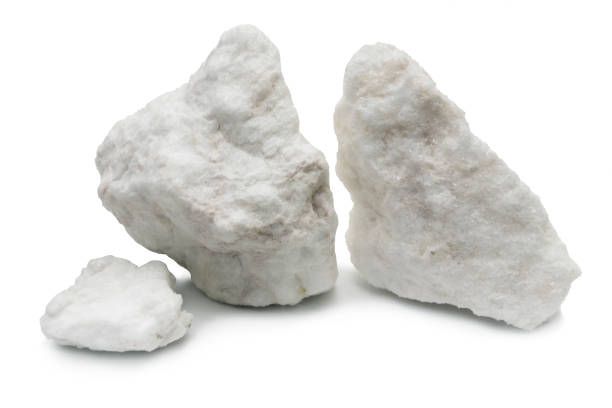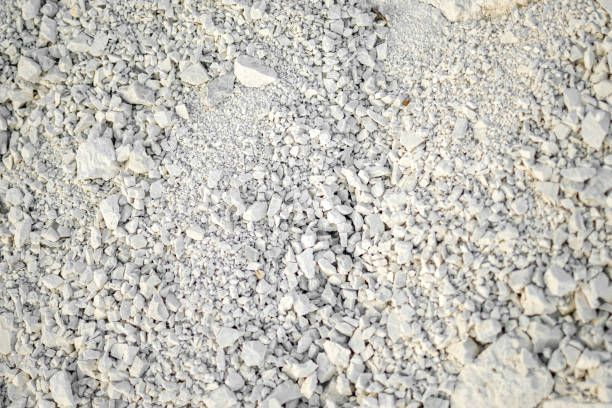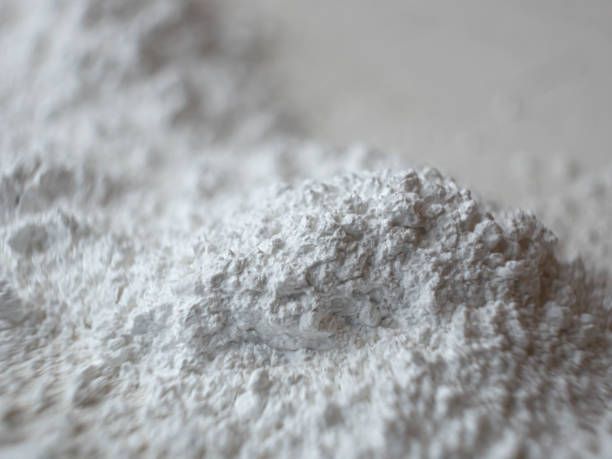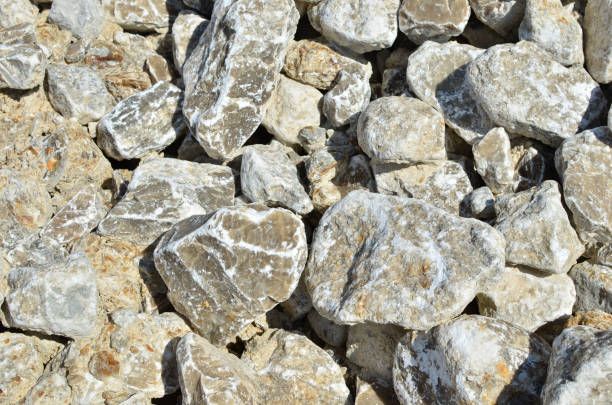Gypsum is a fascinating mineral. It's a common sight in our daily lives, yet many of us know little about it.

This article aims to shed light on the various aspects of gypsum rock or mineral. We'll delve into its geological classification, components, crystalline structure, and chemical formula.
Gypsum is more than just a mineral. It's a versatile component used in a wide range of applications. From construction and agriculture to everyday household items, gypsum plays a crucial role.
But what type of rock is gypsum? How does it form? What are its benefits? These are some of the questions we'll answer.
By the end of this article, you'll have a comprehensive understanding of gypsum. You'll appreciate its significance in various industries and its impact on our lives.
What is Gypsum?
Gypsum is a soft sulfate mineral that plays a major role in our modern world. It's composed of calcium sulfate dihydrate, with the chemical formula CaSO₄·2H₂O. Its properties make it an essential resource in various industries.
One of the key characteristics is the gypsum crystalline structure. This structure is layered, allowing it to cleave into thin sheets. Such a property distinguishes it from many other minerals.
CaSO can form clear crystals called selenite. These shiny crystals are popular with collectors and geologists. They look beautiful.

Gypsum can also be found as large masses, called rock gypsum. When it forms solid shapes, it is seen as a rock. When in a finer state, it is called a mineral.
Gypsum rock and mineral have important differences. As a mineral, it is part of a bigger group of natural substances with a specific chemical makeup. As a rock, it is found in the layers of the Earth, formed over many years.
Knowing these facts about gypsum helps us see why it is such a useful material. It has many uses in different industries and in everyday life. Though it looks plain, it is very important.
Next, we will look at how gypsum is formed and what it is used for.
The Geological Story of CaSO
Gypsum's journey begins in the belly of the earth, where geological forces craft its existence. It typically forms through the evaporation of mineral-rich water in inland seas or saline lakes. When water bodies evaporate, gypsum crystallizes from the sulfate and calcium ions left behind.

Gypsum often surfaces in sedimentary rock layers, shining a light on ancient environmental conditions. Arid climates, where evaporation exceeds precipitation, favor its formation. The mineral silently records the earth’s climate history over millions of years.
Various environments, ranging from deserts to seafloors, host gypsum deposits. Unique formations like White Sands National Monument in New Mexico boast vast gypsum dune fields, a testament to its widespread presence.
Mining CaSO has deep historical roots. Ancient Egyptians used it in building materials for the pyramids. Its utility through the ages has remained consistently valuable in construction and industry.
Today, CaSO mining operations span the globe. These operations are found in countries like the United States, China, and Iran. With advanced techniques, gypsum is mined efficiently without harming the environment excessively.
List of Key Geological Gypsum Locations:
- White Sands National Monument, USA
- Paris Basin, France
- Lake Eyre, Australia
- Volcanic formations in Italy
- Deserts in the Middle East
The mining and use of gypsum have evolved significantly over the centuries. Once a manual and labor-intensive process, modern technology has simplified extraction. This shift allows for safer and more sustainable gypsum production.
Gypsum's historical importance extends beyond construction. Its mineral form adorned artworks and sculptures, enhancing human cultural expression. The dual nature of gypsum as both a rock and mineral has broadened its application spectrum significantly.
The geological story of CaSO is a rich tapestry. It intertwines natural formations with human innovation and cultural evolution. Through this exploration, we see gypsum as both a witness and contributor to earth's history. The mineral's journey from natural deposits to practical uses parallels humanity's own growth and adaptation.
Gypsum's Crystalline Allure
Gypsum crystals captivate with their sheer beauty and variety of forms. Among these forms, selenite stands out. Known for its transparent, glass-like appearance, selenite can form in impressive sizes.

Crystalline CaSO has an intrinsic charm attributed to its fine grain and clarity. It ranges from clear to opaque, adapting numerous color variations through impurities or treatment. This diversity finds a special place in collections and decor.
Crystalline gypsum has a distinct ability to cleave into thin sheets. This property makes it a flexible decorative material. Its softness, rated 2 on the Mohs scale, allows easy shaping without complex tools.
Decor enthusiasts and mineral collectors prize gypsum crystals. Their aesthetics and natural luminescence make them desirable. The soothing glow of selenite, echoing moonlight, enhances serene spaces at home.
In feng shui, selenite is believed to bring tranquility and clarity. Its presence in homes fosters a calming atmosphere. Thus, many individuals include gypsum in their indoor environments for its reputed spiritual benefits.
Artists and craftspersons utilize gypsum crystals in diverse ways. They become the centerpiece of sculptures, bespoke art installations, and jewelry. These applications highlight gypsum’s versatility and enduring allure.
Collectors often seek unique CaSO specimens worldwide. Cave systems and desert lands yield impressive examples of crystalline gypsum. Each piece tells a unique geological story, holding the history of its formation etched in its flawless structure.
Gypsum in Construction and Industry
Gypsum plays a pivotal role in construction. It is the backbone of many building materials. Drywall, or gypsum board, is a staple in modern construction.

Builders favor gypsum for its versatility and practicality. It creates smooth interior surfaces for walls and ceilings. This helps ensure aesthetics and functionality in residential and commercial spaces.
Gypsum possesses unique fire-resistant properties. This makes it valuable in building safety. It helps contain fires and prevents the spread within structures.
Materials with sound-absorbing qualities are crucial in modern design. CaSO excels here as well. It diminishes noise transfer between rooms, enhancing privacy and comfort.
Gypsum's Key Benefits in Construction
- Fire resistance: Protects structures and enhances safety.
- Sound absorption: Reduces noise pollution, ensuring comfort.
Industry appreciates gypsum for its eco-friendly qualities. It's naturally occurring, non-toxic, and widely available. These make it a sustainable choice for manufacturers.

Recycling CaSO is increasingly important. Used drywall can be processed into new materials. This reduces landfill waste and conserves natural resources.
Environmental Impact
- Recyclability: Minimizes waste, aiding sustainable construction practices.
- Availability: Abundant supply reduces environmental extraction stress.
Gypsum contributes to cement production. It controls the setting time, vital for concrete's practical application. This enhances workability and durability in finished projects.
Agricultural and landscape sectors also utilize gypsum. It aids in soil structuring and water filtration. Its multifaceted utility extends beyond the construction site.
Innovations in CaSO products focus on enhancing its already impressive traits. Technological advancements continue to refine its uses, making it more efficient and environmentally friendly.
The global construction industry relies heavily on gypsum. Its combination of affordability, performance, and sustainability ensures its place in the future of building.
Agriculture and Gardening
Gypsum is an incredibly effective soil conditioner that plays a vital role in improving the quality of soils used for farming and gardening. It is highly valued by both farmers and gardeners alike, mainly due to its ability to enhance the physical properties of the soil. This makes it an essential component for anyone looking to cultivate healthy plants or crops.
When gypsum is applied to the soil, it significantly improves the overall soil structure. One of its key functions is breaking down heavy clay soils, which can be quite challenging to work with. As a result of this breakdown, water infiltration is enhanced, allowing water to seep into the soil more effectively, while also reducing the amount of water runoff. This means that plants receive the moisture they need more efficiently, leading to better growth and health.

Plant growth is positively impacted by the use of gypsum in several ways. The mineral is a valuable source of two essential nutrients: calcium and sulfur. Both of these nutrients are crucial for the development of plants, as they play significant roles in various physiological processes. By providing these nutrients, gypsum facilitates stronger and healthier plant growth, ensuring that they thrive.
Advantages of Using Gypsum in Soil
- Improves soil structure: The addition of gypsum enhances water permeability, making it easier for water to flow through the soil. This, in turn, encourages root growth, allowing plants to establish themselves more effectively in their environment.
- Provides essential nutrients: In addition to enhancing soil structure, gypsum also supplies crucial nutrients like calcium and sulfur. These elements are important for the overall health and vitality of plants.
Furthermore, gypsum is particularly useful for preventing soil compaction, which can hinder root penetration. By improving the soil's structure, gypsum enables roots to grow more deeply and spread further, leading to healthier and more robust plants overall.
Another significant advantage of gypsum is its ability to act as a natural pesticide. It provides an effective means of controlling various soil-borne pests without the use of harmful chemicals. Many gardeners appreciate this non-toxic alternative, as it allows them to protect their plants while minimizing environmental impact.
In addition to these benefits, gypsum also plays an important role in reclaiming saline soils. By displacing sodium ions in the soil, gypsum helps to restore soil fertility. This process can be particularly crucial in areas affected by salt, where high salinity can severely limit agricultural productivity.
In summary, the agricultural benefits of gypsum are extensive. From improving soil health and structure to serving as a natural pesticide and remedy for saline soils, gypsum's contributions are invaluable. For anyone invested in sustainable agriculture and gardening, this mineral remains an essential tool for cultivating thriving plants and maintaining healthy soil conditions.
Everyday Products
CaSO finds its way into many foods and household items. It's used as a coagulant in tofu production. Beer brewing also benefits from gypsum's properties.
In cosmetics, CaSO acts as a filler. This contributes to smoother skin products. It enhances the texture of creams and lotions.

Gypsum plays a role in medical and dental fields. It helps create dental molds and plaster casts. These casts are essential in setting broken bones.
In art, gypsum's adaptability shines. It's used in sculpting and making artistic plaster creations. Crafters and model makers appreciate its versatile nature.
Examples in Everyday Use
- Food: Tofu production, brewing beer.
- Cosmetics: Creams, lotions.
- Household items: Chalk, plaster products.
Households use CaSO in various forms. Blackboard chalk consists of CaSO , as does plaster of Paris. These materials are common in education and decor.
Its applications in art and craft are vast. From canvas texture additives to mold making, gypsum offers endless possibilities. Artists and artisans value its reliability.
The Science
CaSO scientific intrigue starts with its chemical formula. The gypsum chemical formula, CaSO₄·2H₂O, represents calcium sulfate dihydrate. This composition is essential for gypsum's unique properties.
The crystalline structure of gypsum is fascinating. It features layers that cleave into thin sheets. This property is pivotal for its utility in various applications.
On the Mohs scale of hardness, gypsum ranks low. With a hardness rating of 2, it is soft. This makes it easy to work with in different industries.
Gypsum's softness allows it to be ground into a fine powder. This powder is used in many industrial processes. Its workability is a key benefit in construction.
Scientific Facts About Gypsum
- Chemical formula: CaSO₄·2H₂O
- Crystalline structure: Layered and cleavable
- Mohs hardness: 2
Understanding gypsum's solubility is important. It dissolves readily in water compared to other minerals. This characteristic influences its environmental and agricultural applications.
The effects of gypsum's solubility are widespread. In soil, it aids in improving structure and drainage. Additionally, it helps neutralize acidic conditions, benefiting plant growth.
Environmental and Health Aspects of CaSO
CaSO serves as a valuable environmental indicator. When gypsum forms, it often signifies specific geological conditions. These include arid or evaporative environments where gypsum crystallizes.
Understanding gypsum's formation helps in interpreting past climates. It offers clues about ancient water bodies. This geological role extends to studies of current environmental trends.

One of CaSO's notable features is its non-toxic nature. Unlike many minerals, it is harmless to humans and animals. This safety extends to its use in households and industries.
The mineral's safety makes it versatile in products used daily. From drywall to cosmetics, gypsum remains a reliable choice. Its non-toxic characteristics ensure it poses no health risks.
Gypsum also contributes significantly to air and water quality improvement. It helps reduce dust in industrial applications. Moreover, it aids in controlling soil erosion, thus enhancing water purity.
Benefits of CaSO on Environment and Health
- Indicator of Environmental Conditions: Reflects historical climates and landscapes.
- Non-Toxic Nature: Safe for human and animal exposure.
- Air and Water Quality: Helps control dust and enhances soil structure.
In summary, gypsum's environmental benefits are extensive. It plays roles in both scientific and practical applications. Its safe and sustainable qualities make it indispensable in many fields.
Conclusion: The Multifaceted Uses of Gypsum
Throughout history, gypsum has proven itself invaluable. It plays roles in construction, agriculture, and even daily household products. Its soft, yet strong nature makes it versatile and efficient.
Understanding gypsum components helps in appreciating its diverse applications. From ancient constructions to modern industry, gypsum continues to support innovation. Its benefits extend beyond mere functionality, touching lives in countless ways.
In essence, gypsum is more than just a mineral. It embodies a blend of practicality and environmental consciousness. This combination underscores the importance of knowing and utilizing gypsum in today's world.

